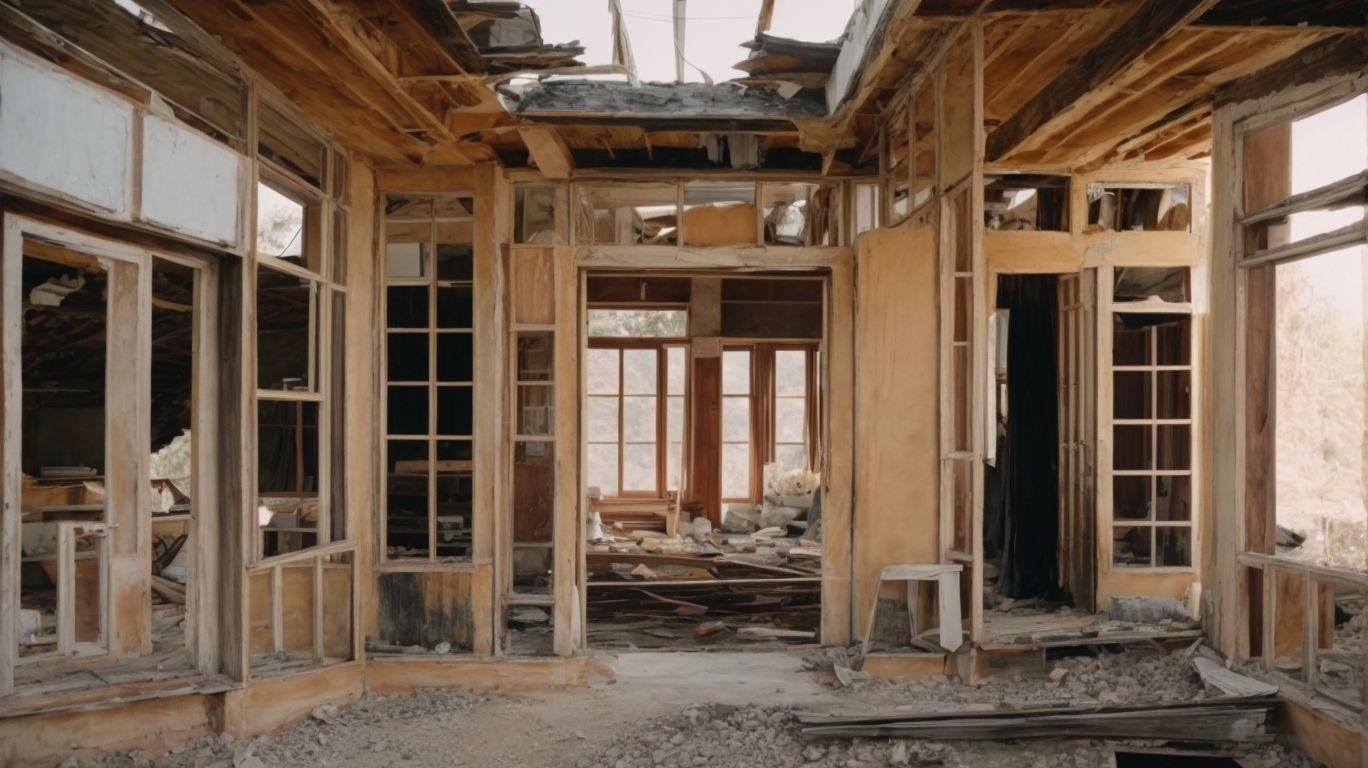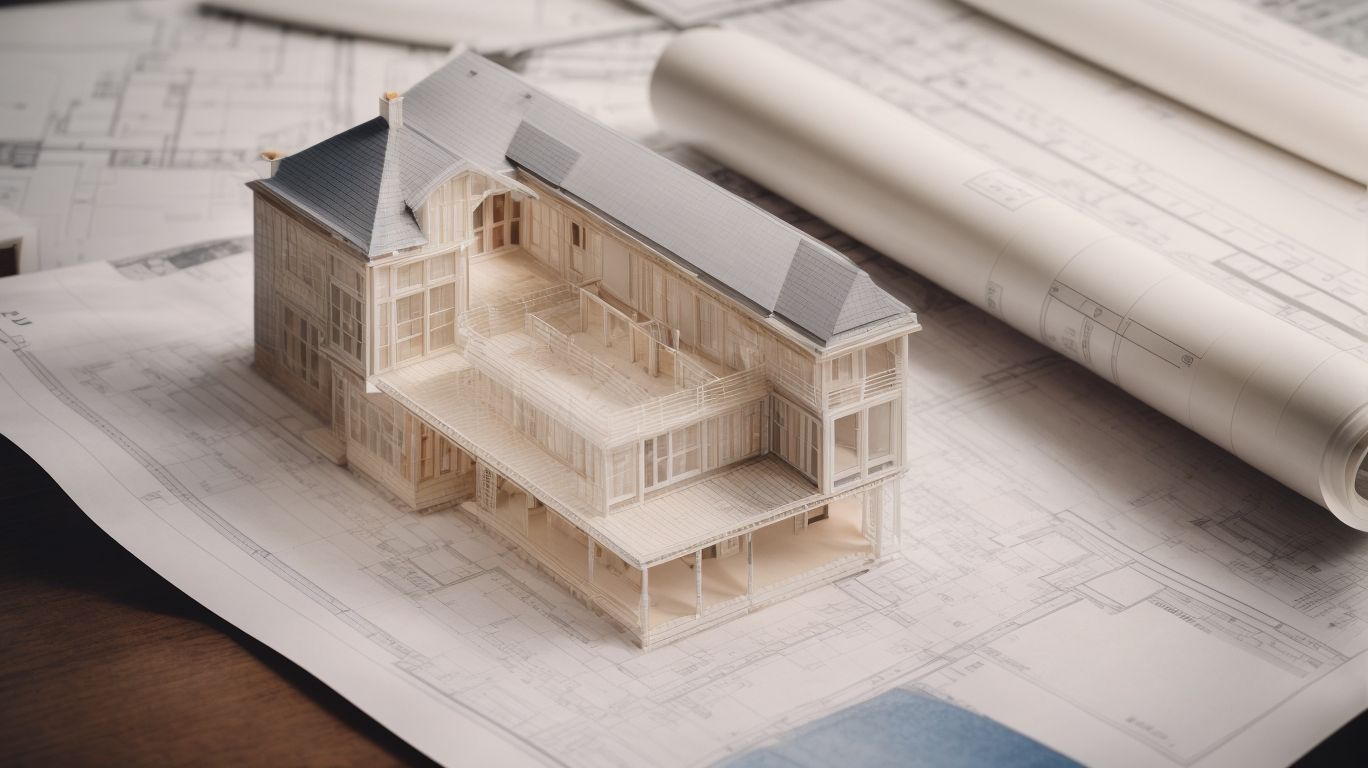
Case Study: Structural Engineering Transformation of a SF Home
Are you curious about the transformation of a San Francisco home through structural engineering? In this case study, we will explore the background of the SF home, the structural issues it faced, and the proposed solution for these issues.
We will dive into the detailed process of the structural engineering transformation, including assessment, planning, obtaining permits, demolition, and more. We’ll discuss the results of the transformation, including its impact on the home’s structural integrity, aesthetic changes, and overall cost.
Join us as we uncover the fascinating journey of this SF home’s structural engineering transformation.
The Background of the SF Home
The SF Home, located in [Insert Location], underwent a comprehensive renovation and structural engineering transformation to revitalize its architectural features and enhance its overall appeal as a modern residence.
Originally constructed in the late 19th century, the SF Home carries a significant historical weight, reflecting the prevailing architectural styles of that era.
The renovation of this iconic residence aimed to preserve its historical essence while incorporating contemporary design elements, creating a seamless blend of old-world charm and modern functionality.
The motivation behind this ambitious project was rooted in the desire to honor the home’s rich history while also adapting it to meet the evolving needs of modern-day homeowners.
The renovation combined meticulous attention to detail with innovative residential remodeling techniques, resulting in a harmonious fusion of past and present.
The Structural Engineering Transformation
The structural engineering transformation of the SF Home involved a meticulous process of structural analysis, innovative design, and strategic retrofit solutions to ensure its resilience and integrity in the face of modern engineering challenges and seismic considerations.
Our enhancements incorporated cutting-edge materials and technologies, providing a sustainable and cost-effective solution.
The advanced renovation techniques utilized state-of-the-art methodologies to reinforce the existing structure while accommodating the latest architectural specifications.
The application of innovative design solutions improved the overall aesthetic appeal of the building without compromising its structural stability.
The integration of these elements showcases the convergence of modern engineering principles with the preservation of historical architecture, setting a new standard for structural engineering transformations.
What Were the Structural Issues of the SF Home?
Prior to the transformation, the SF Home faced significant structural issues, including [Insert Specific Issues], necessitating extensive foundation repairs, structural upgrades, and the application of advanced engineering expertise to ensure its long-term structural safety and integrity.
During the renovation process, our team faced challenges due to structural issues that affected the stability and durability of the home. The extent of foundation damage revealed underlying instability that needed immediate attention. To address weaknesses and reinforce key structural elements, extensive upgrades were necessary. Our team utilized advanced engineering expertise to develop innovative solutions that would meet safety standards and building codes, ensuring long-term structural reliability.
What Was the Proposed Solution for the Structural Issues?
In response to the identified structural issues, a comprehensive set of retrofit solutions was proposed, encompassing foundation strengthening, structural redesign, and targeted structural enhancements, aligning with the latest retrofitting strategies to address the specific challenges faced by the SF Home.
To address the structural vulnerabilities, proposed solutions involve a multi-faceted approach. Retrofit strategies include implementing steel bracing systems, increasing load-bearing capacity, and integrating seismic dampers. These measures aim to mitigate the impact of seismic forces on the building.
Foundation strengthening methods include soil stabilization, underpinning, and installation of reinforced concrete footings. The overall structural redesign aims to reinforce key elements and introduce flexible building materials to enhance resilience against seismic events. This is done while considering the architectural and aesthetic aspects of the SF Home.
The Process of the Structural Engineering Transformation
The process of the structural engineering transformation involved meticulous assessment and planning, strategic coordination for obtaining permits, and the implementation of advanced construction techniques, all overseen by efficient project management to ensure seamless project execution within the framework of building regulations and established construction practices.
The project started with a thorough assessment of the current structure, evaluating its structural integrity, load-bearing capacities, and potential for renovations. This was followed by careful planning, including conceptualizing design changes, selecting materials, and estimating costs. It was crucial to coordinate with local authorities to obtain building permits and regulatory approvals. With the administrative groundwork in place, the execution phase involved using advanced construction techniques, following industry standards and safety protocols to improve the structure.
Assessment and Planning
The initial phase of the structural engineering transformation centered on in-depth assessment and meticulous planning, integrating engineering principles and retrofitting strategies to effectively address the seismic retrofitting requirements and establish a comprehensive project planning framework.
This involved a thorough evaluation of the structural integrity, identifying vulnerable areas, and analyzing the building’s response to seismic forces. Engineering principles such as structural dynamics, material properties, and load-bearing capacity were carefully considered to develop retrofitting solutions.
Seismic retrofitting considerations encompassed the selection of appropriate reinforcement materials and techniques to enhance the building’s ability to withstand earthquakes. The formulation of retrofitting strategies aligned with the specific needs of the structure, ensuring a customized approach to mitigate seismic risks and enhance overall structural resilience.
Obtaining Permits
The process of obtaining permits for the structural engineering transformation involved navigating stringent building codes, integrating effective construction management practices, and aligning with urban development initiatives to ensure the overall sustainability and compliance of the renovation project.
This thorough process required close collaboration with architecture and civil engineering teams to meticulously plan and execute the renovation while meeting regulatory standards.
Adherence to sustainable construction practices, including energy-efficient designs and the use of eco-friendly materials, was paramount during the permit acquisition.
The project’s alignment with urban development goals was a focal point, ensuring that the renovation contributed positively to the surrounding community and urban landscape.
Demolition and Excavation
The phase of demolition and excavation during the renovation process focused on preparing the groundwork for subsequent building upgrades, integrating sustainable design principles and residential upgrades, all managed within the framework of effective construction management practices.
Sustainable design elements were prioritized, ensuring that materials from the demolition phase were repurposed or recycled whenever possible to minimize environmental impact.
The incorporation of residential upgrades aimed to enhance living spaces with modern amenities and energy-efficient features, aligning with the overall sustainability objectives.
Effective construction management was crucial in coordinating the various aspects of the project, ensuring timelines were met, and resources were optimized to achieve the desired results.
Foundation and Framing
The foundation and framing phase involved the implementation of seismic upgrades, aligning with the best practices in the construction industry, and addressing the specific requirements for foundation repair within the broader scope of home remodeling and retrofitting processes.
This phase required meticulous attention to detail to ensure the structural integrity of the building. The incorporation of seismic upgrades not only enhanced the safety and stability of the home but also adhered to the latest industry standards.
The construction team focused on reinforcing the foundation to meet the specific requirements for repair, thereby laying a strong groundwork for the subsequent stages of remodeling and construction.
Electrical, Plumbing, and HVAC
The installation of electrical, plumbing, and HVAC systems prioritized energy efficiency, utilizing sustainable building materials and integrating advanced engineering solutions to contribute to the overall structural revitalization and project success.
This approach ensured that the building’s energy consumption was optimized while minimizing the environmental impact. Energy-efficient practices guided the selection of high-performance appliances and systems, resulting in reduced utility costs and long-term sustainability.
Sustainable building materials such as recycled steel, low-VOC paints, and energy-efficient lighting fixtures were strategically incorporated, aligning with the project’s eco-friendly objectives. The application of advanced engineering solutions facilitated the seamless integration of smart technologies and automated systems, enhancing the overall operational efficiency and occupant comfort.
Inspections and Final Touches
The final phase encompassed thorough inspections and the addition of final touches, aligning with efficient project execution and the application of retrofitting strategies to ensure the structural safety and contribute to the overall building restoration process.
This involved meticulously checking for any potential weaknesses or vulnerabilities in the structure and implementing appropriate measures to address them.
The application of retrofitting strategies was vital in reinforcing the building’s framework and ensuring its ability to withstand potential stress and load-bearing requirements.
The significance of these steps cannot be overstated, as they not only enhance the building’s longevity but also contribute to the safety and well-being of its occupants. It illustrates the meticulous attention to detail and commitment to structural integrity in the restoration process.
The Results of the Structural Engineering Transformation
The results of the structural engineering transformation showcased the enhanced structural integrity, significant aesthetic changes, and the successful implementation of cost-effective solutions, contributing to the overall success of building and residential upgrades.
These transformations have not only bolstered the buildings’ stability but also provided a visually appealing facelift, making them more alluring in contemporary architecture.
The application of innovative yet cost-effective solutions has not only optimized the structural performance but also proved to be a sustainable approach towards construction and renovation projects. The improved structural integrity has led to heightened safety standards, ensuring the resilience of the buildings against various environmental and structural challenges.
How Did the Transformation Affect the Home’s Structural Integrity?
The transformation significantly enhanced the home’s structural integrity through targeted redesign, comprehensive building upgrades, and the application of advanced engineering solutions, thereby ensuring the safety and resilience of the residence within the context of residential development.
This overhaul involved reimagining the layout to optimize structural support, reinforcing key load-bearing elements, and integrating innovative materials for increased durability.
The redesign not only improved the aesthetic appeal but also addressed any pre-existing weaknesses within the building’s framework.
The application of cutting-edge engineering solutions enhanced the home’s ability to withstand environmental stresses, such as high winds or seismic activity, making it a more secure and stable living space for its inhabitants.
What Were the Aesthetic Changes Made to the Home?
The aesthetic changes made to the home were achieved through the strategic application of cost-effective solutions, innovative architectural design, and the incorporation of sustainable construction practices, resulting in comprehensive structural enhancement within the broader context of building renovation.
This approach not only ensured a visually appealing transformation but also contributed to the overall efficiency and sustainability of the property.
The cost-effective solutions involved the use of reclaimed materials and energy-efficient fixtures, while the innovative architectural design incorporated open floor plans and natural light optimization.
Sustainable construction practices were implemented by utilizing eco-friendly building materials and incorporating passive heating and cooling techniques, leading to a harmonious blend of aesthetics and functionality.
What Was the Overall Cost of the Transformation?
The overall cost of the transformation encompassed the expenses related to the renovation, the retrofitting process, efficient project planning, construction management, and compliance with building regulations, resulting in a comprehensive financial overview of the structural engineering transformation.
This thorough analysis involved the evaluation of material costs, labor expenses, and the procurement of specialized equipment and technology.
The project planning stage included detailed assessments of timelines, resource allocation, and risk management strategies to ensure efficient progress and cost control.
Construction management entailed coordinating contractors, overseeing schedules, and addressing any unexpected challenges that arose during the transformation process.
Adherence to building regulations involved extensive collaboration with local authorities, obtaining necessary permits, and ensuring that the structural modifications complied with safety and environmental standards.
These factors collectively contributed to the accurate estimation and management of the overall transformation costs.




No Comments